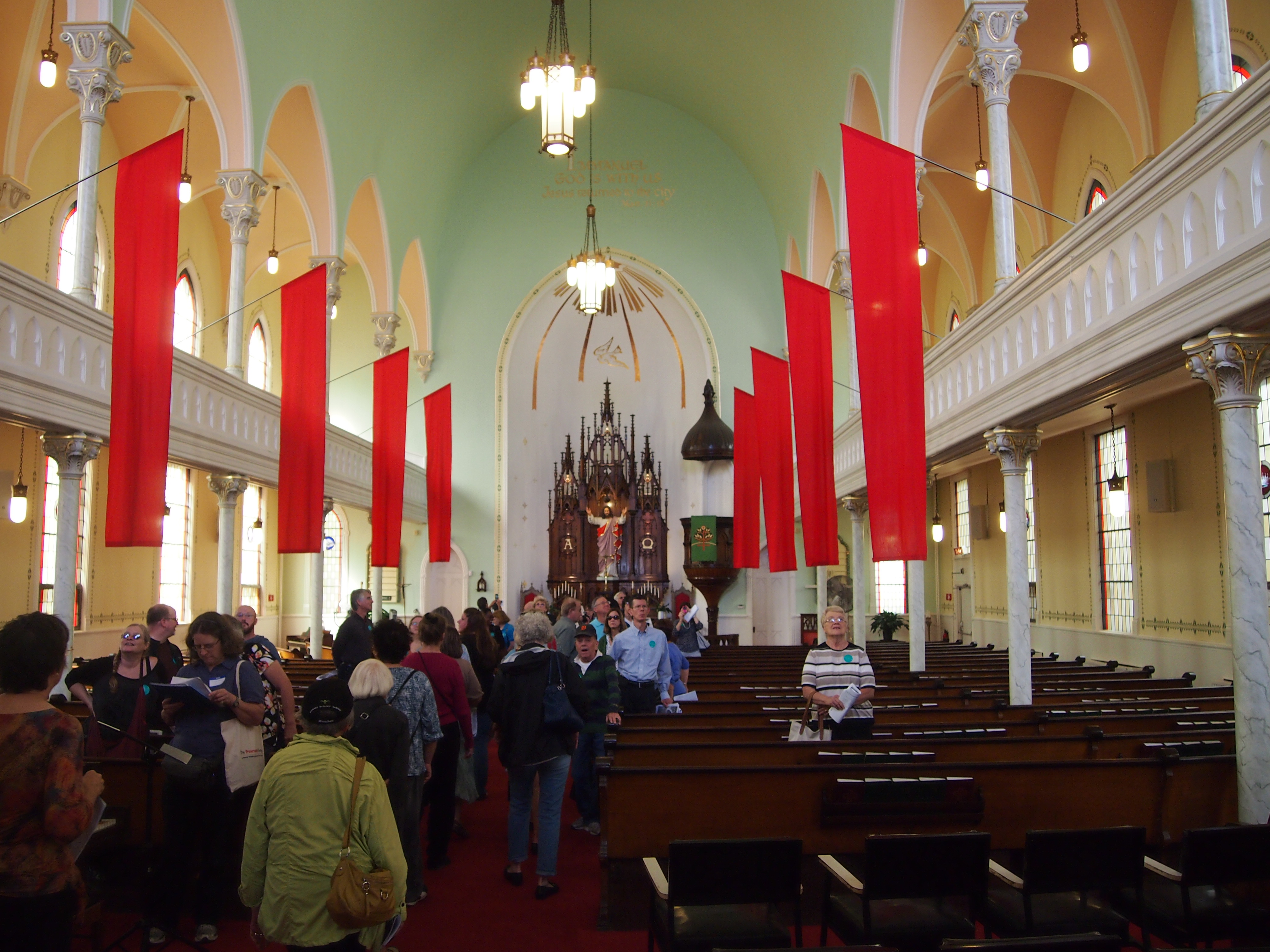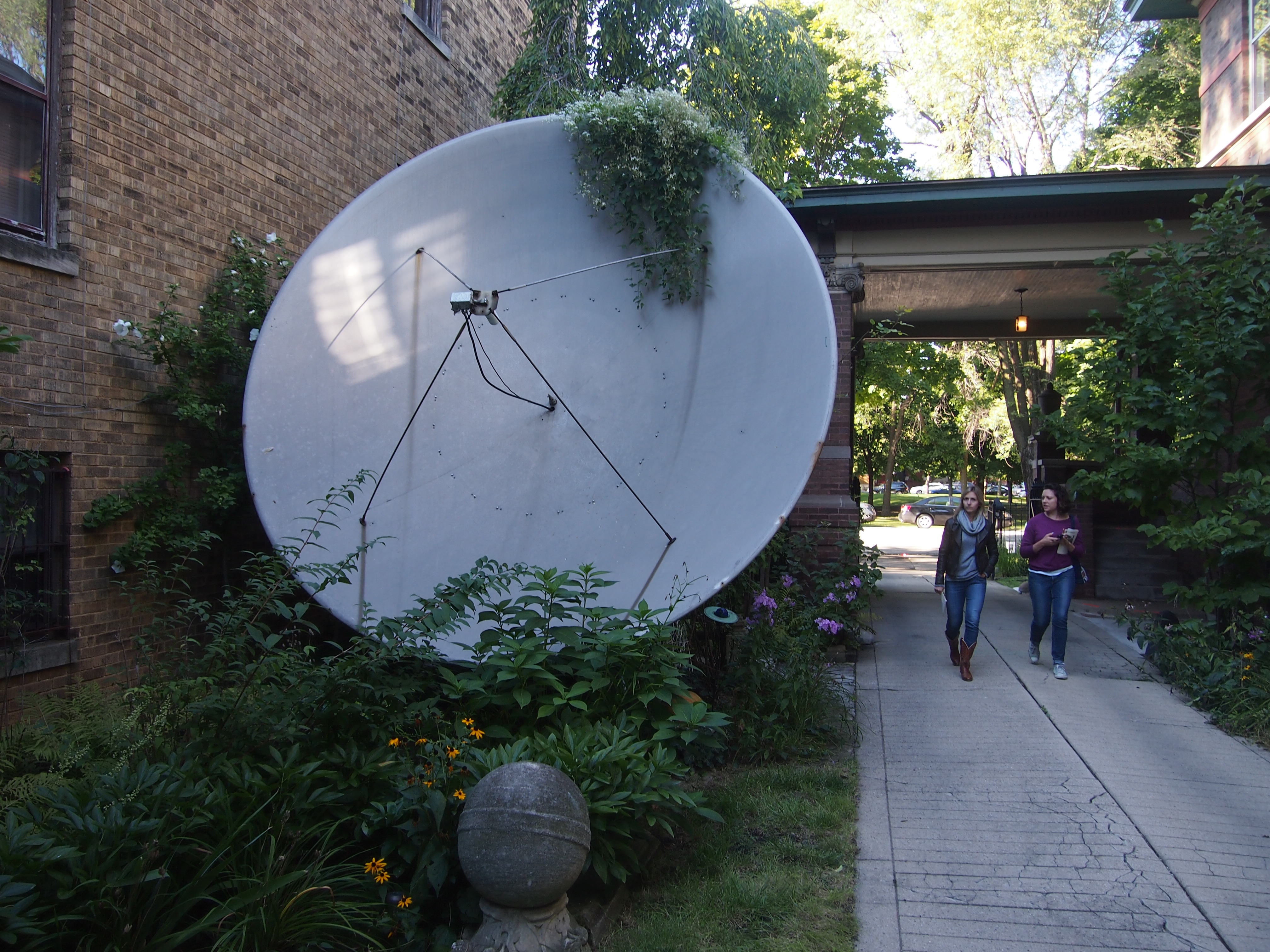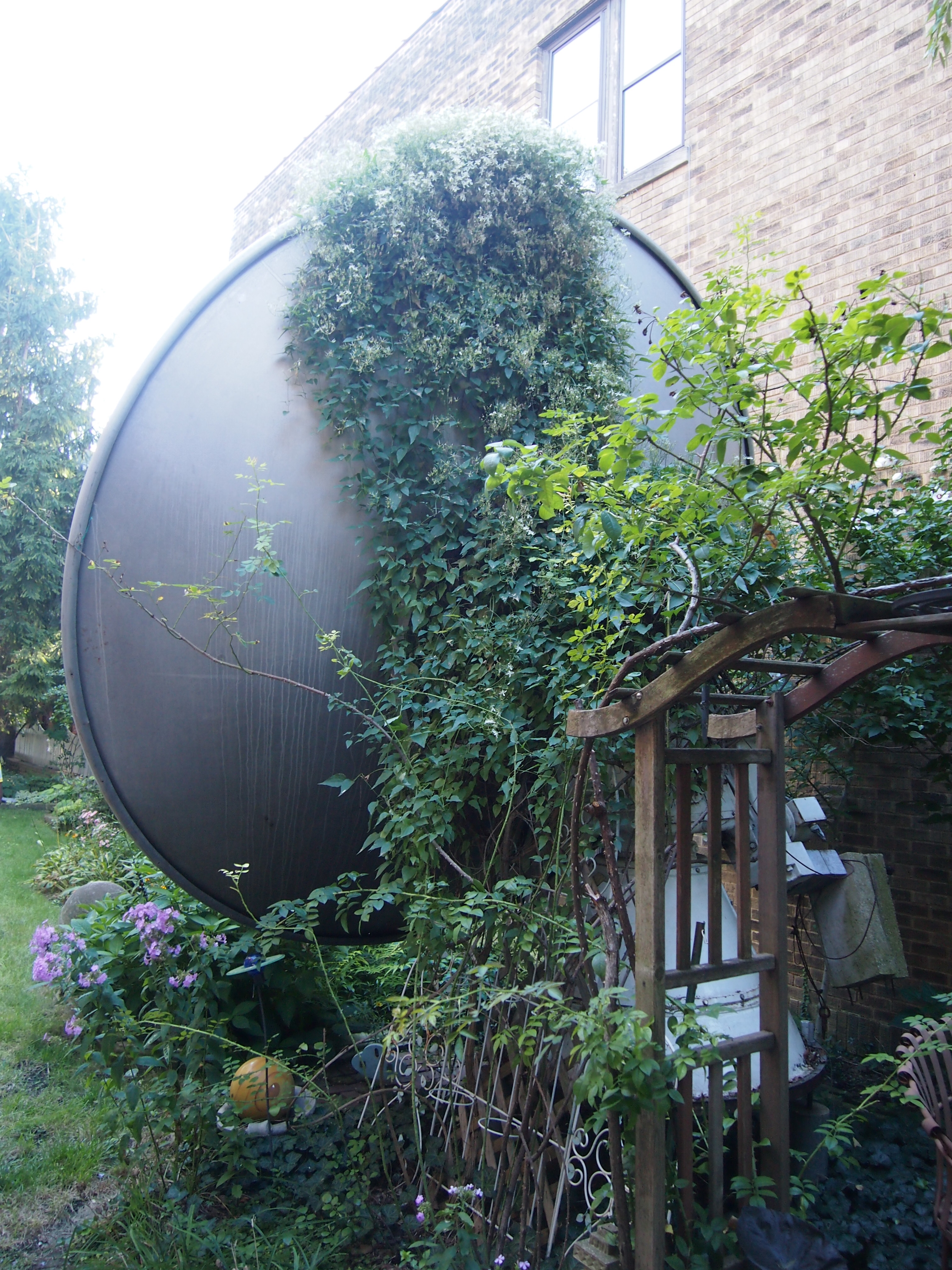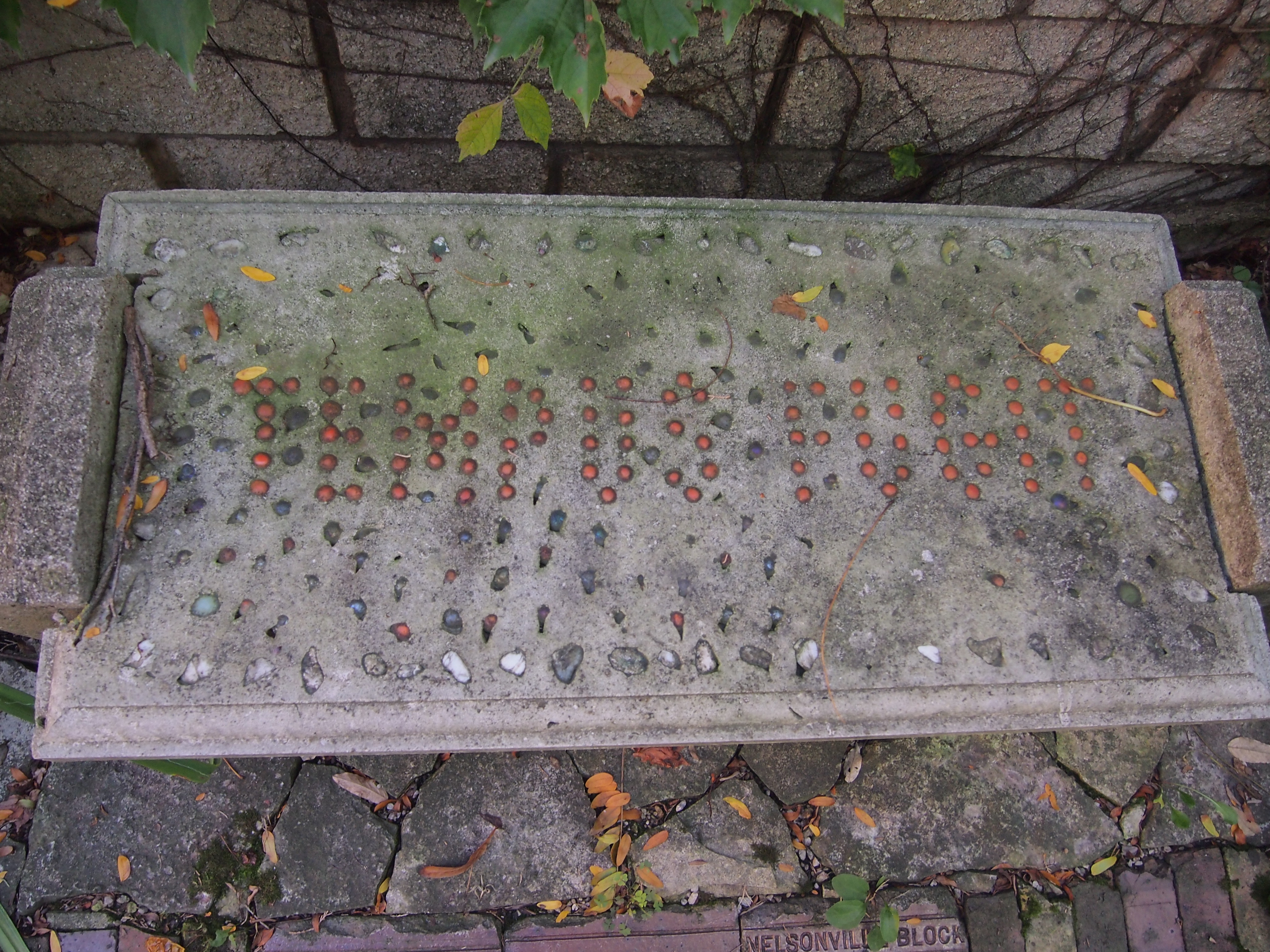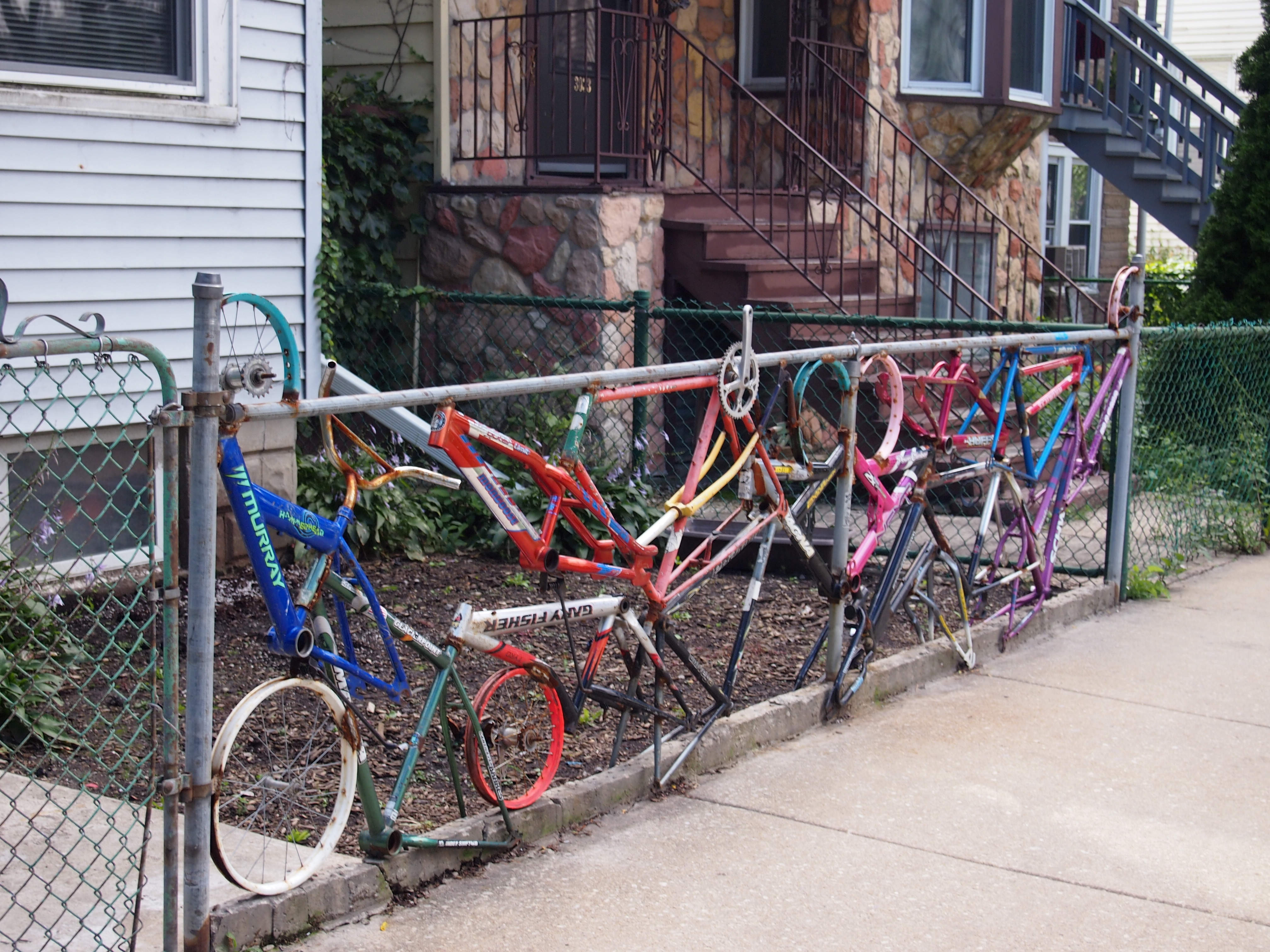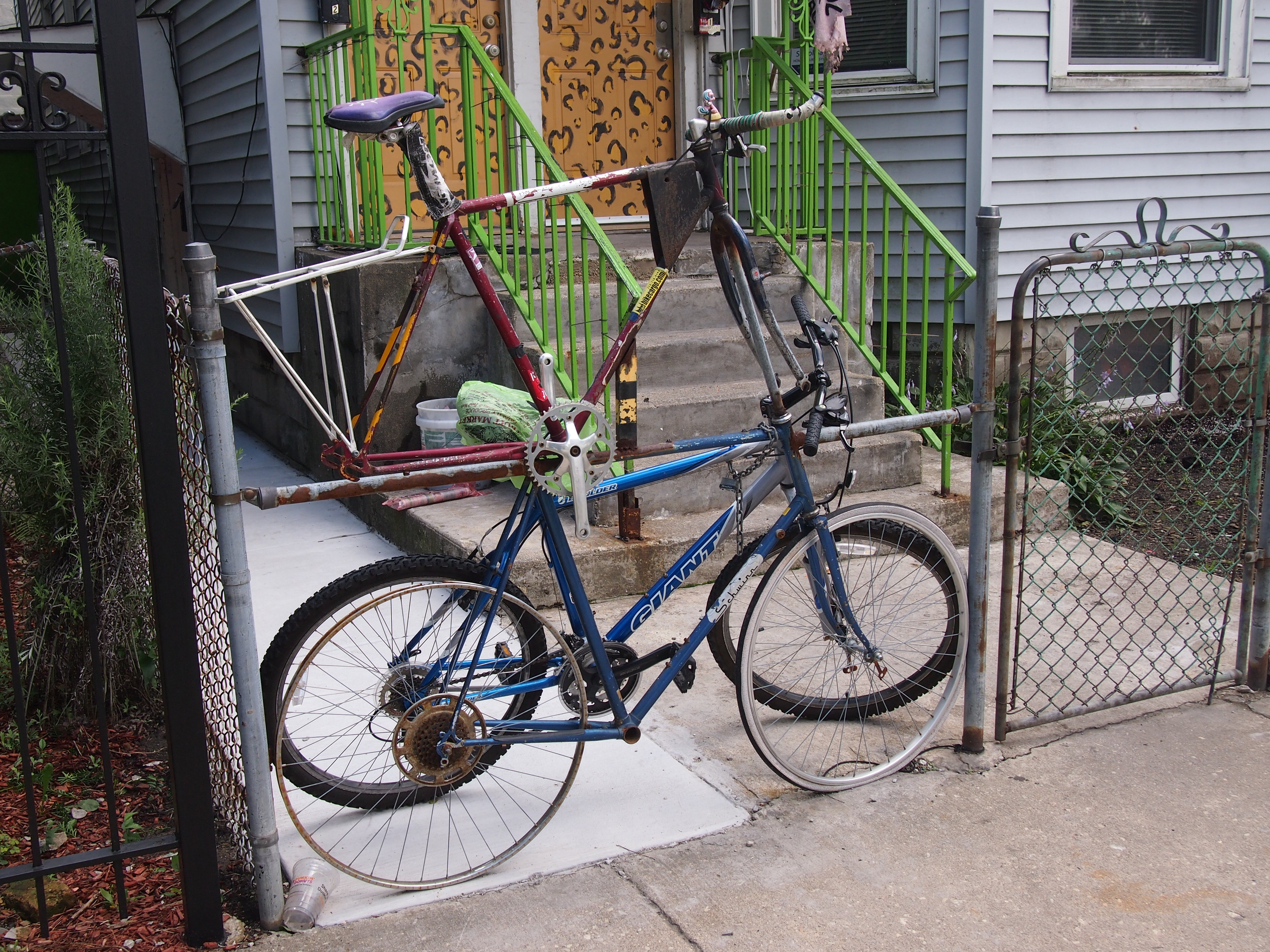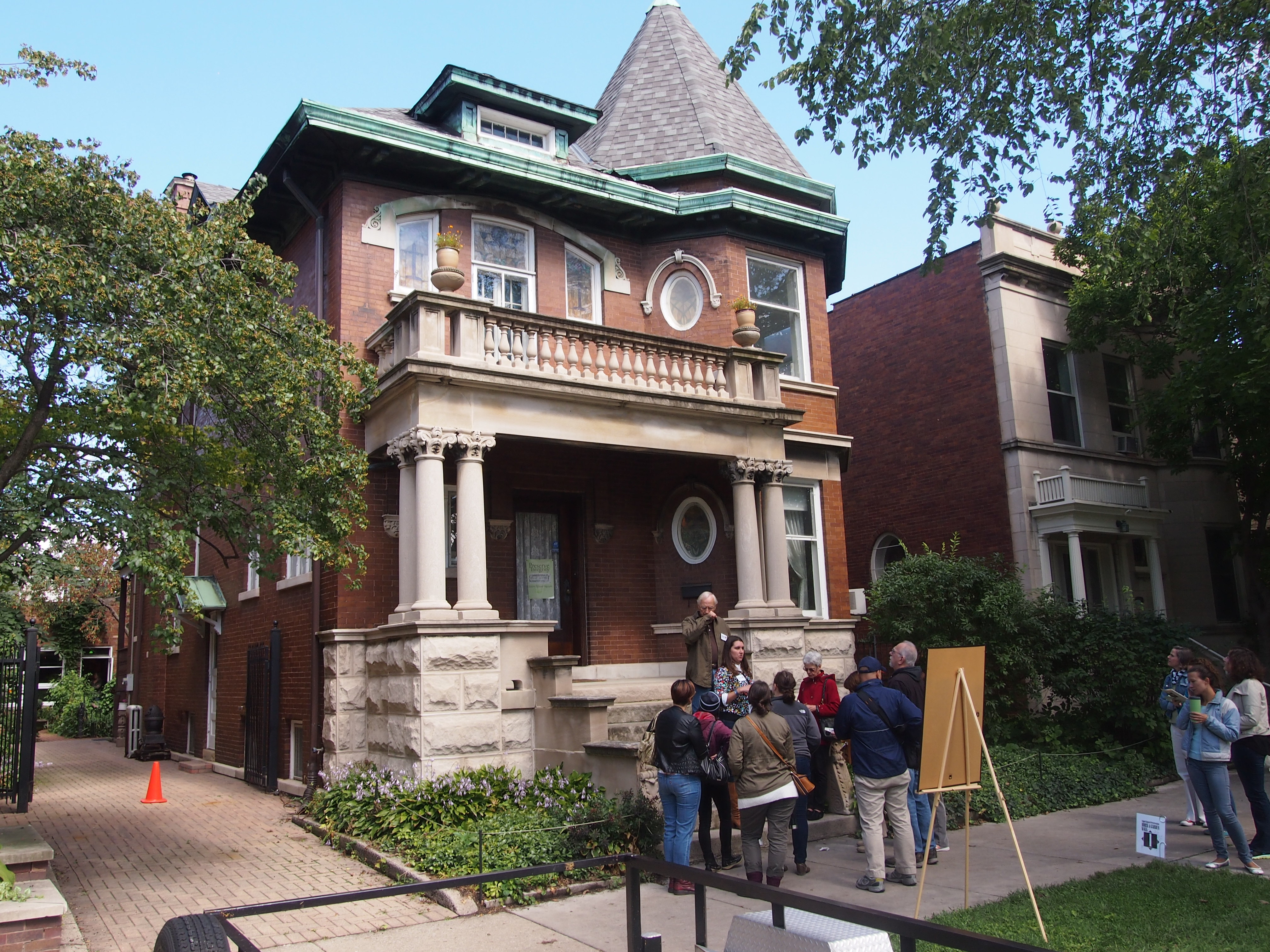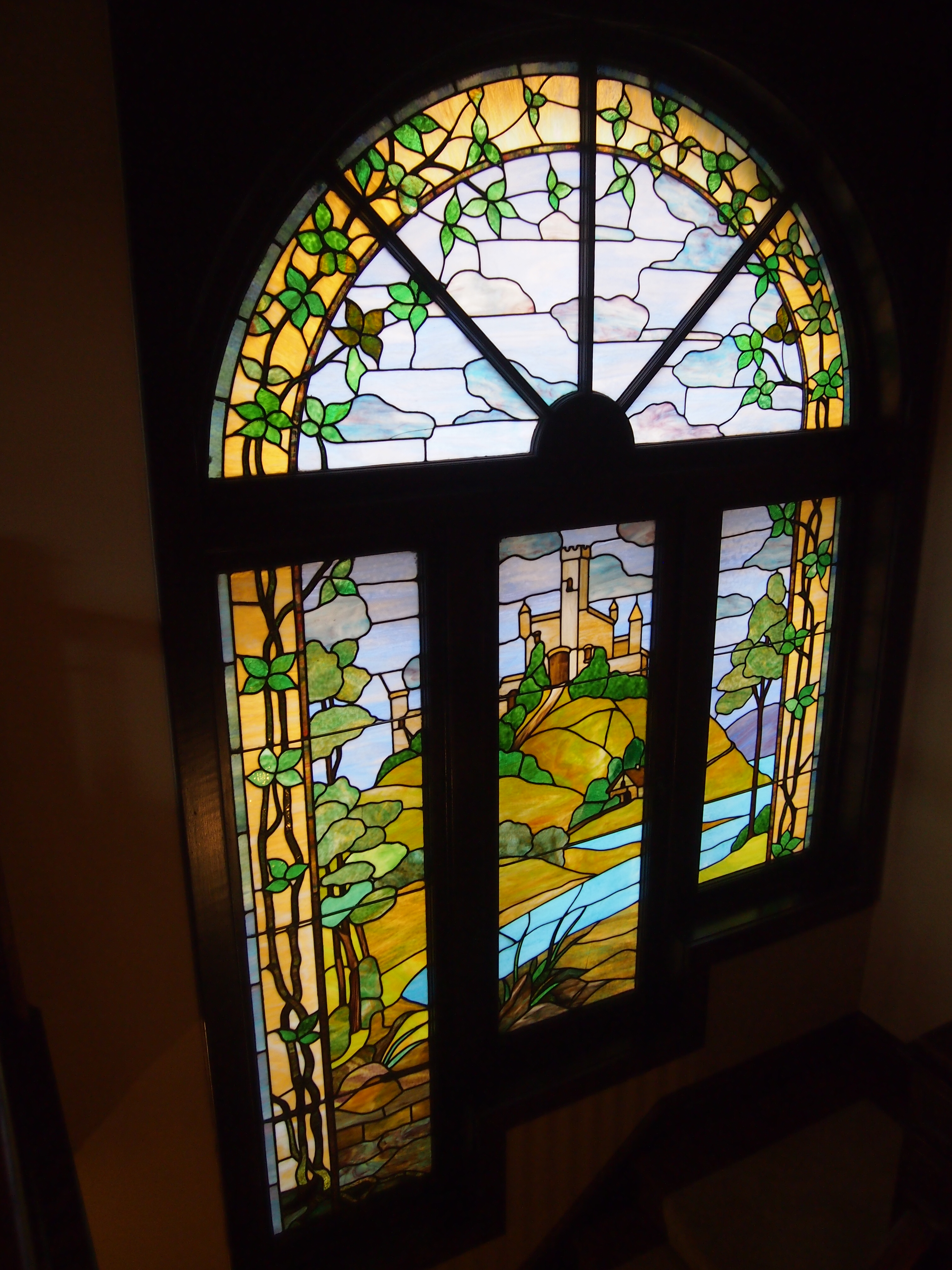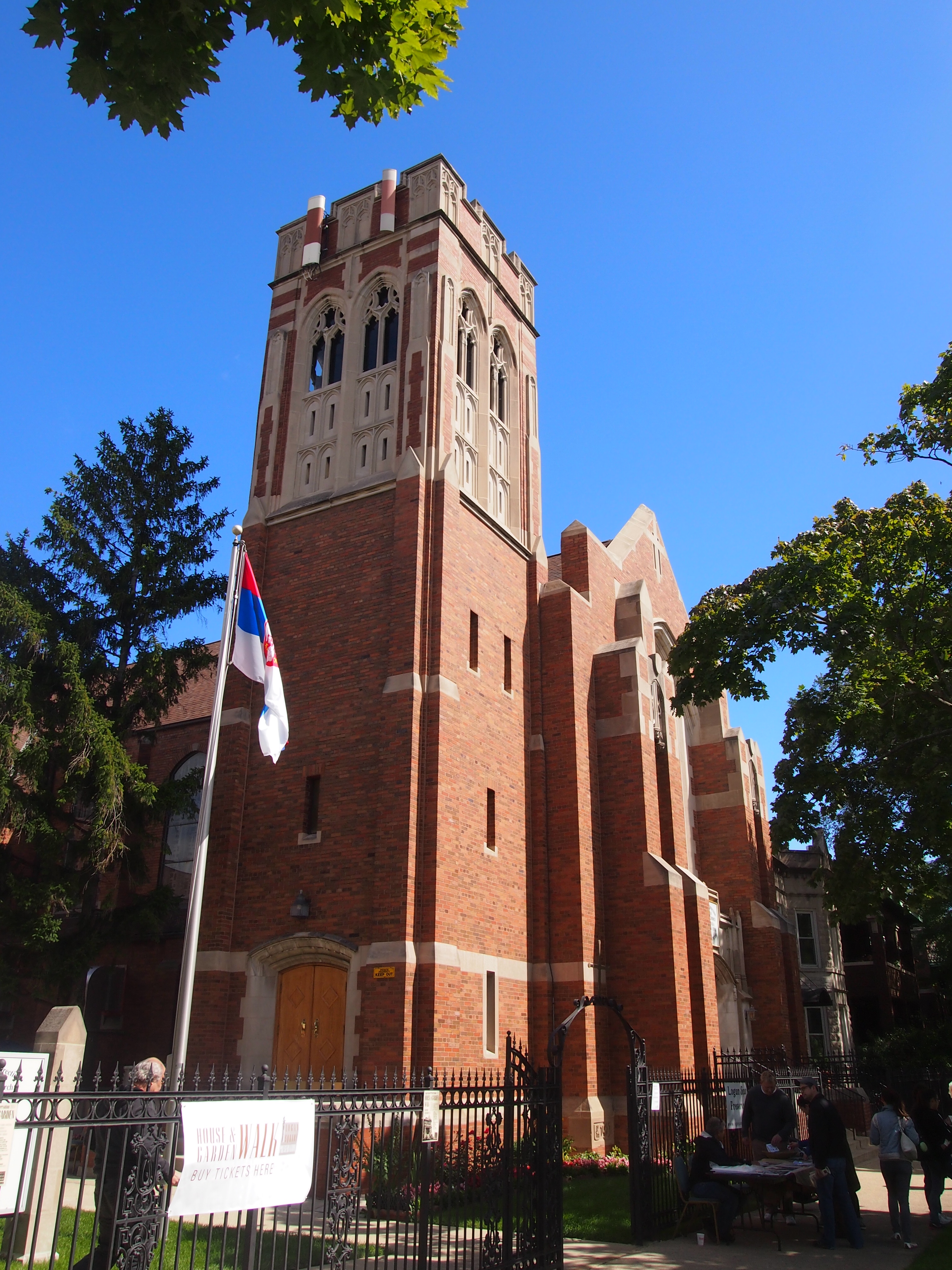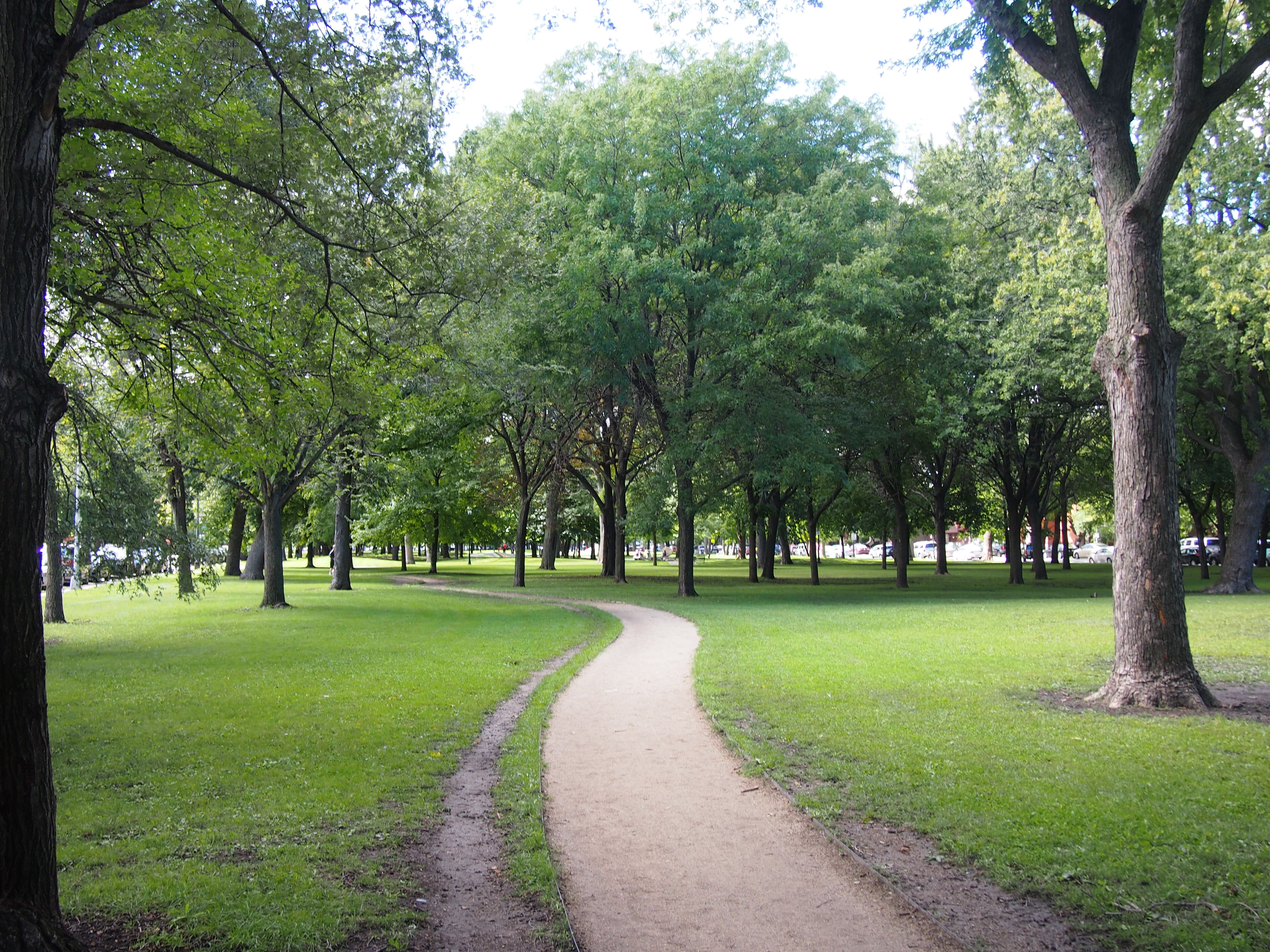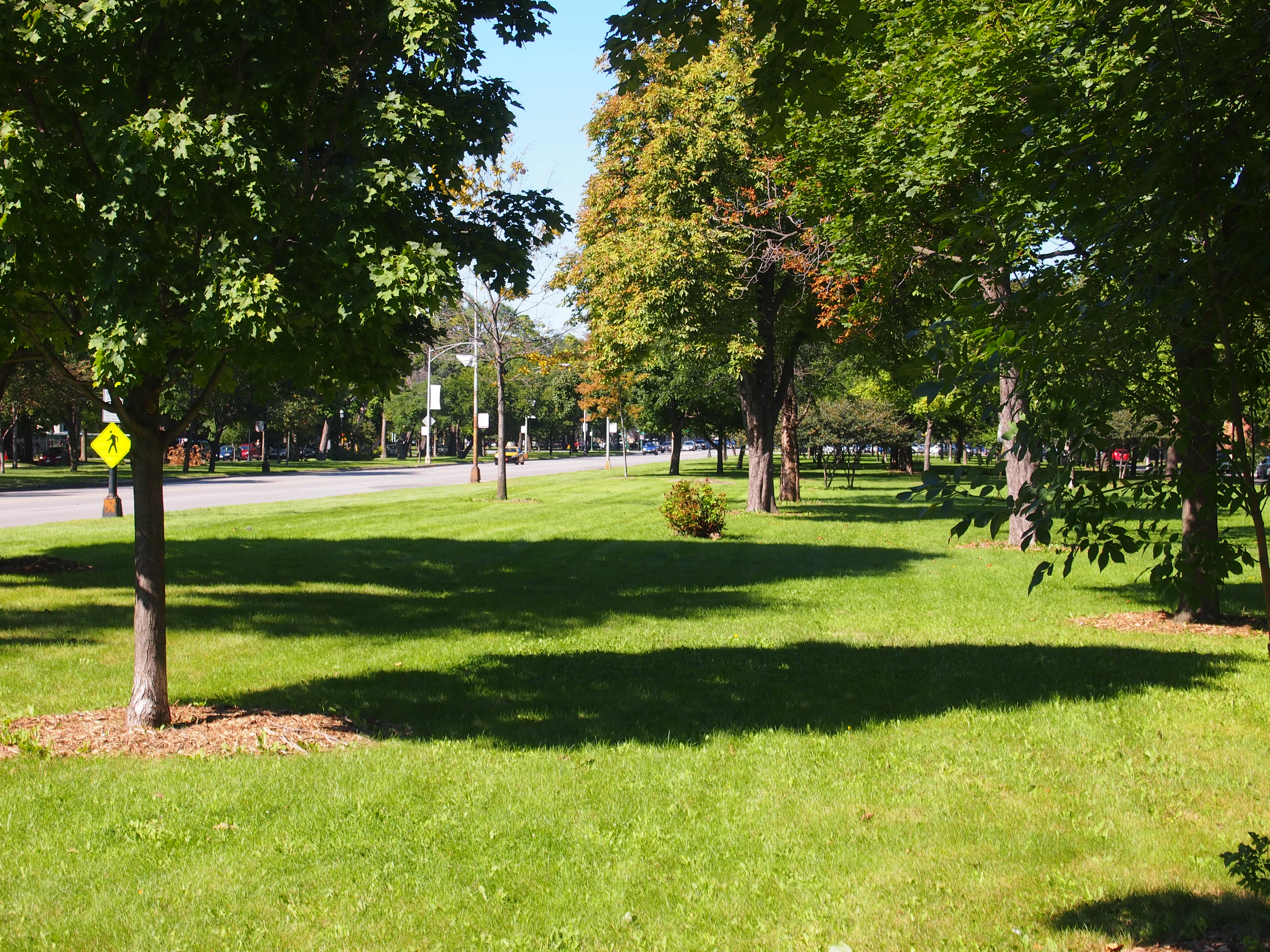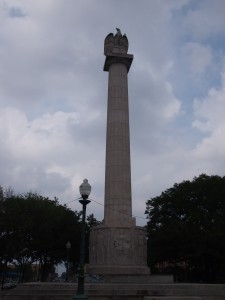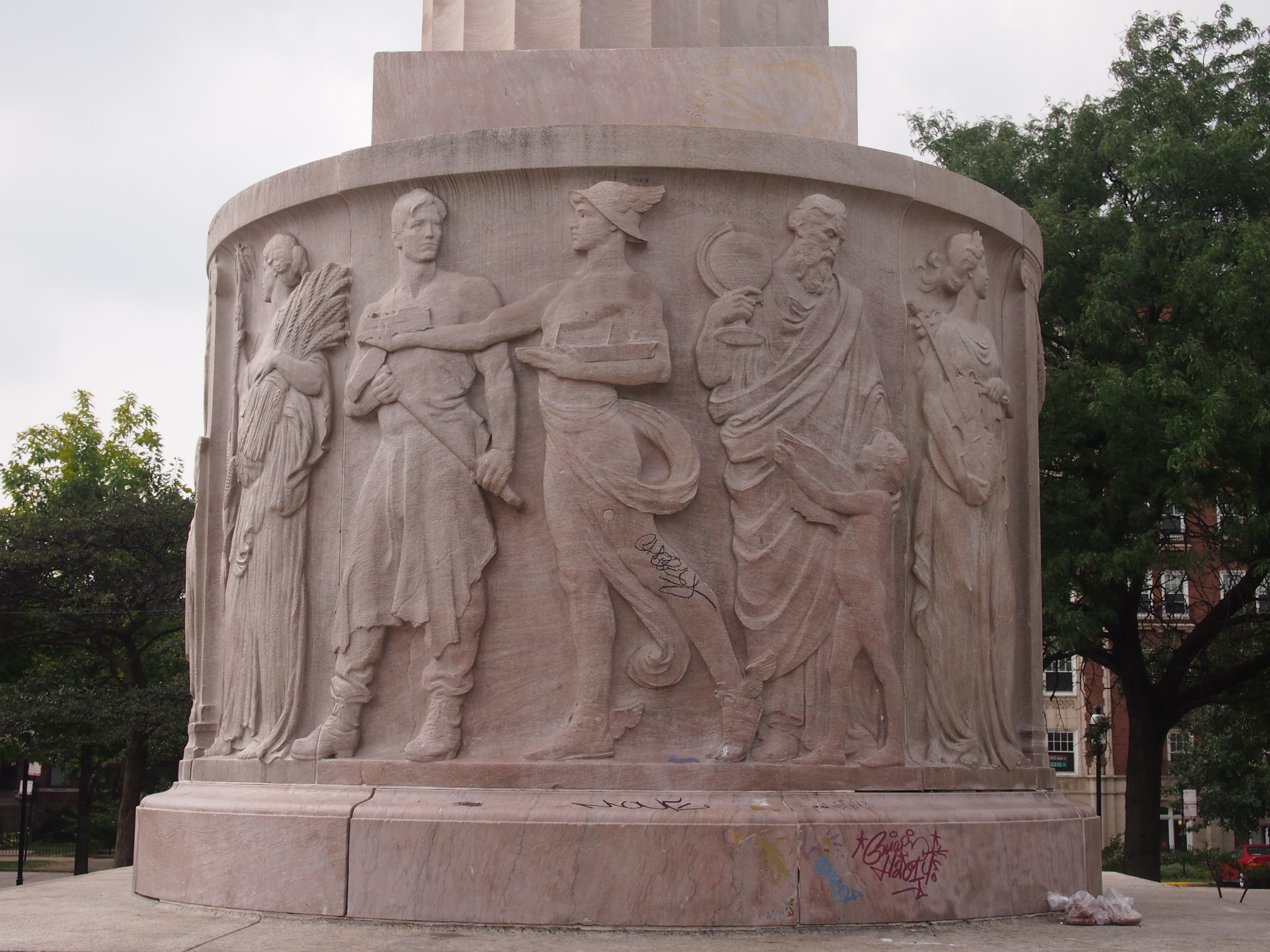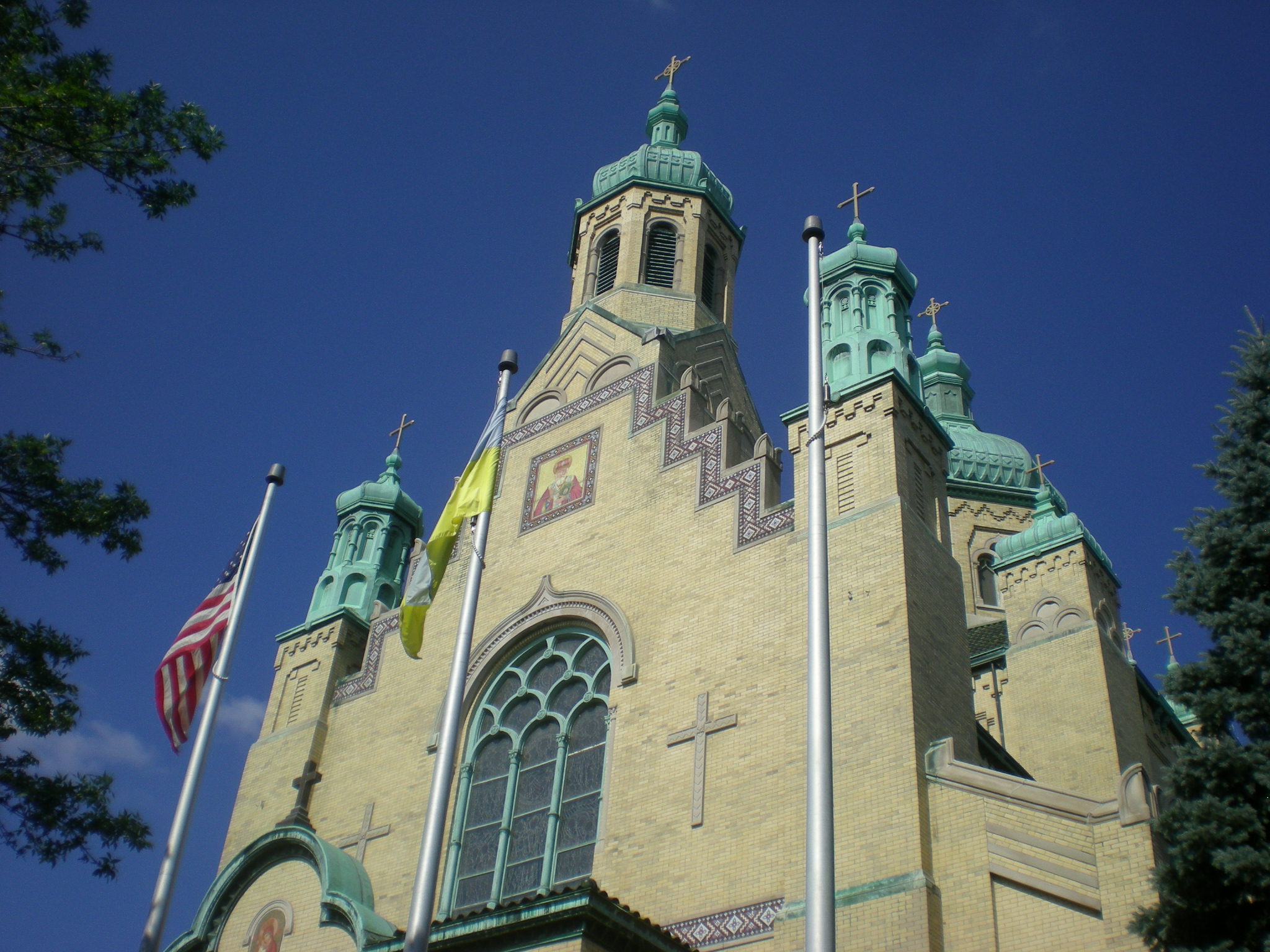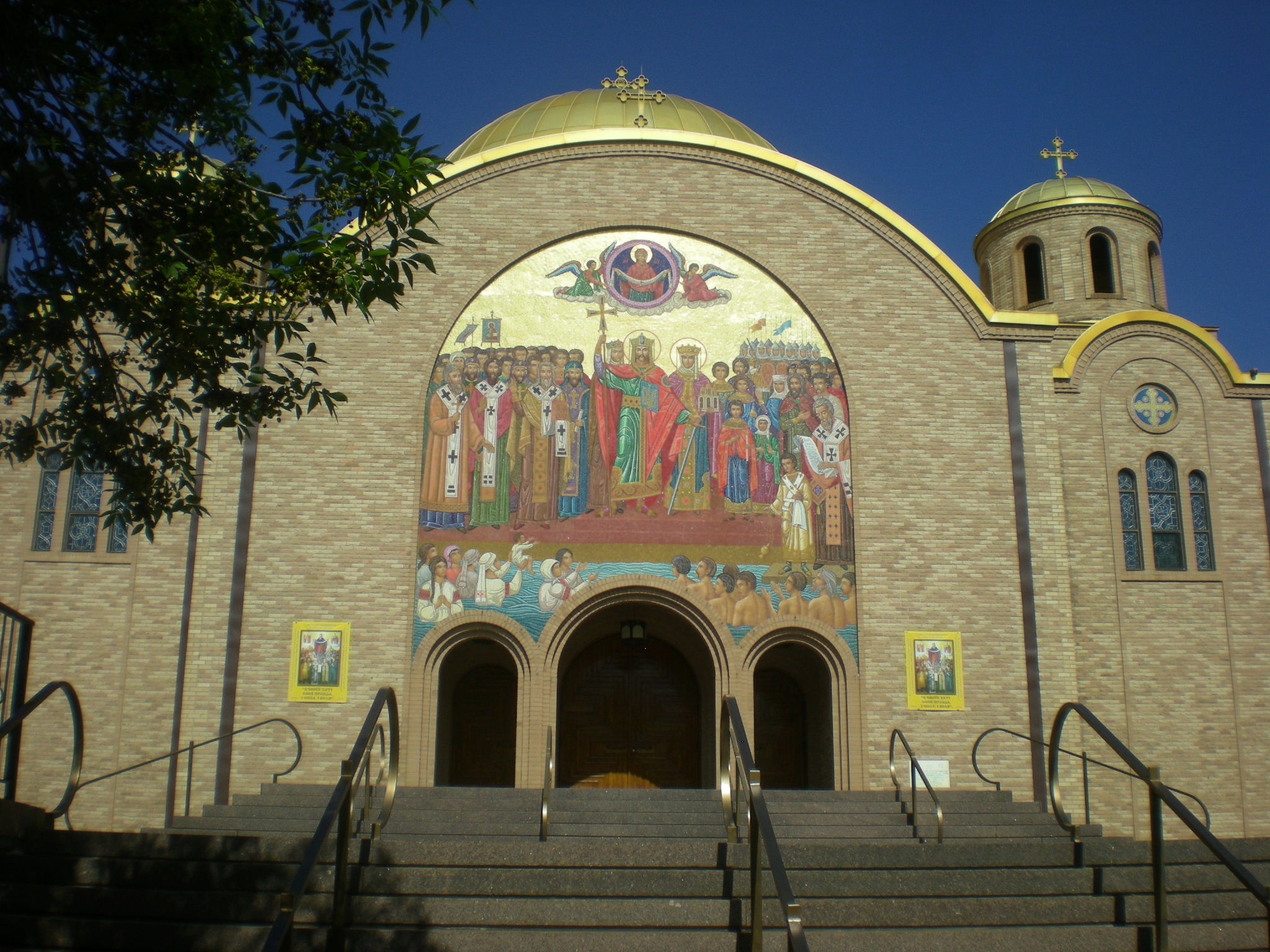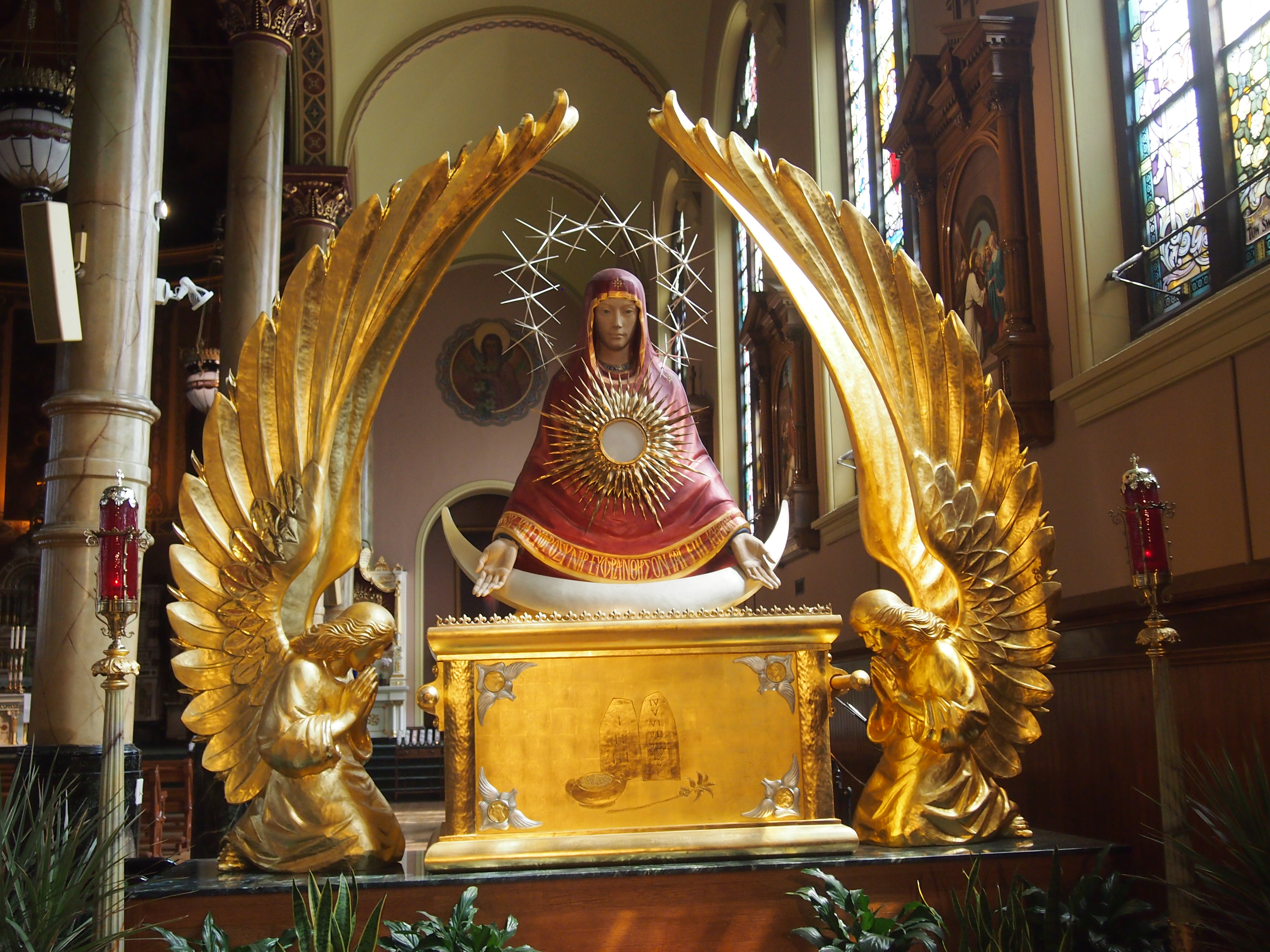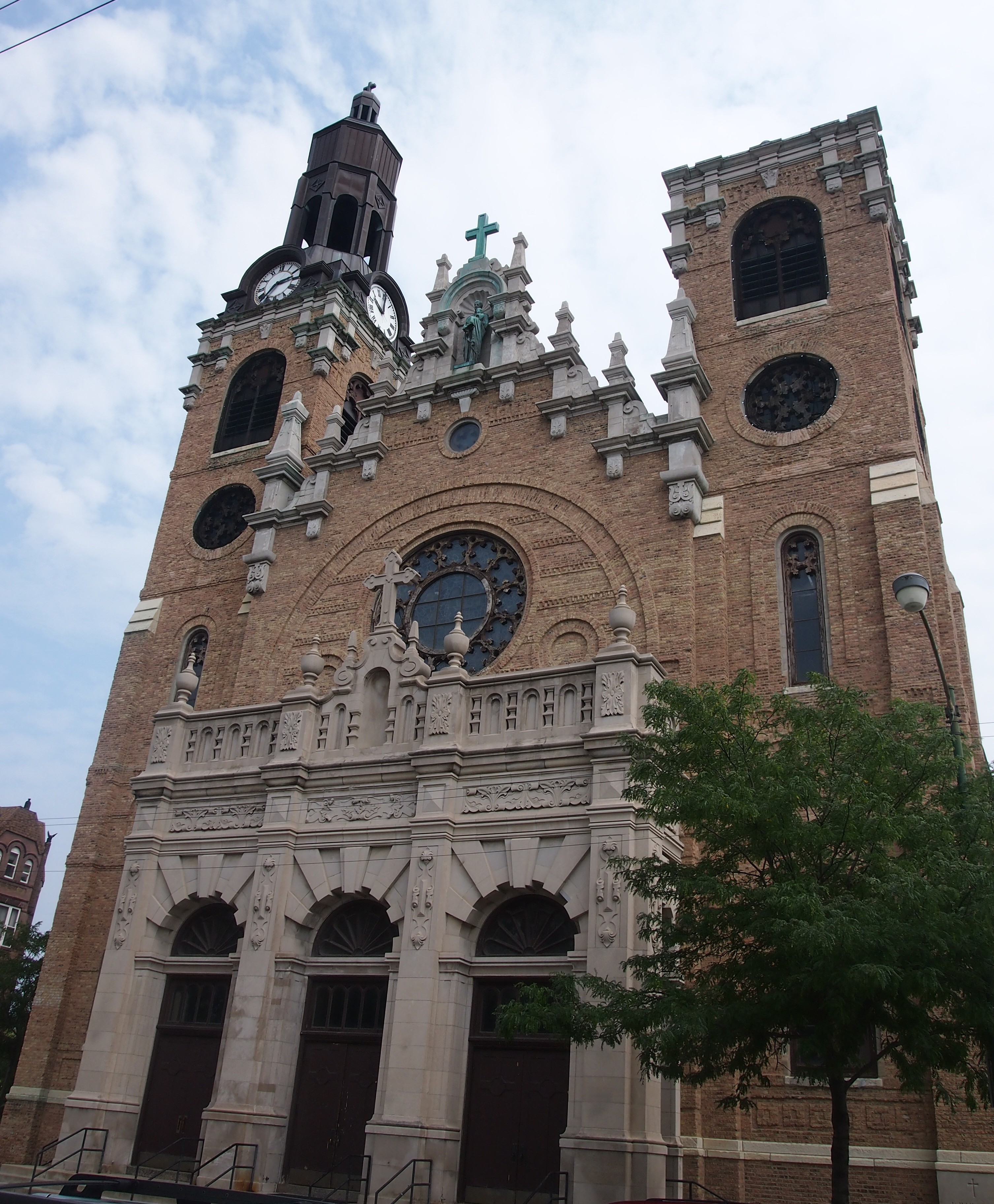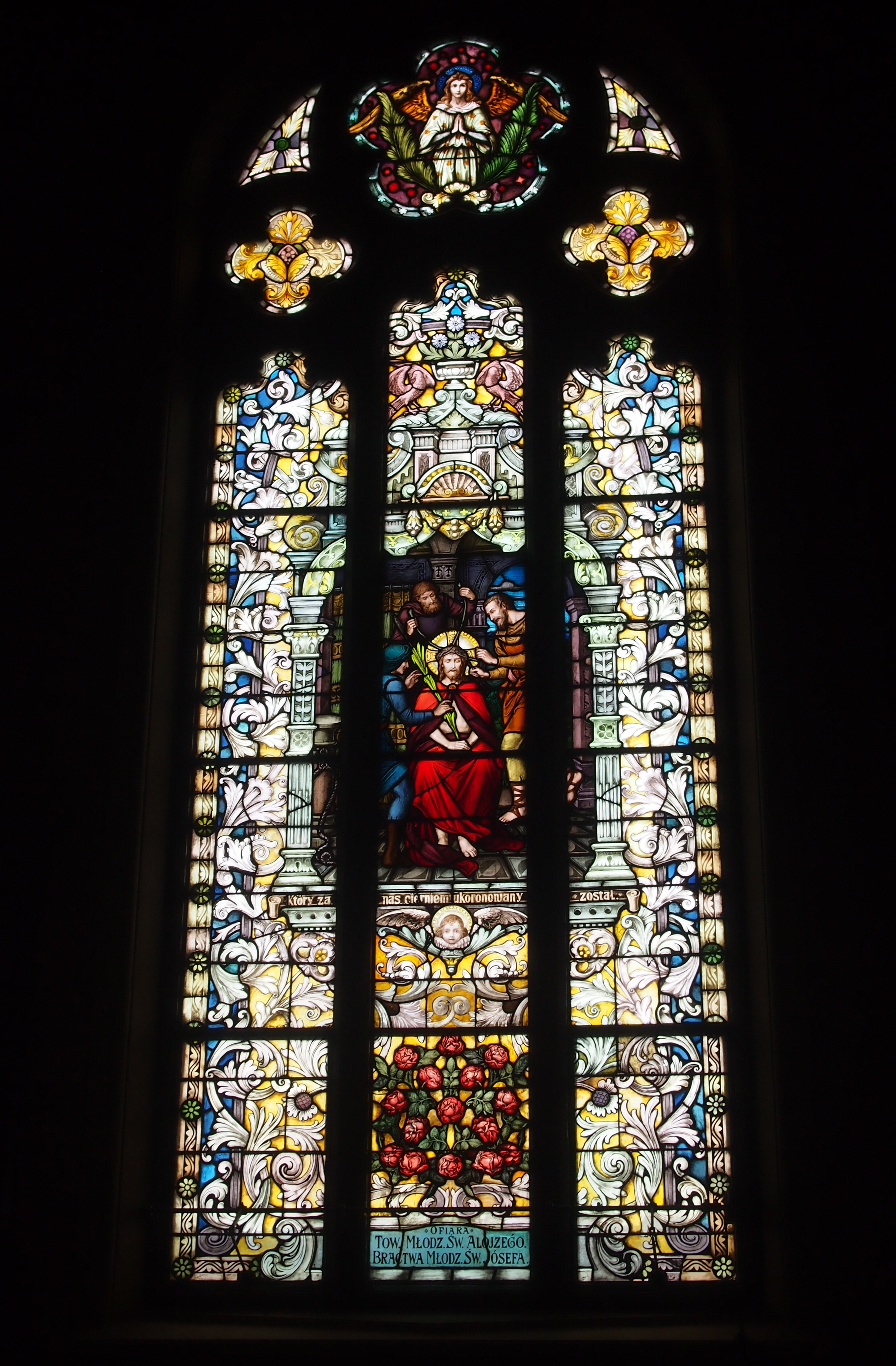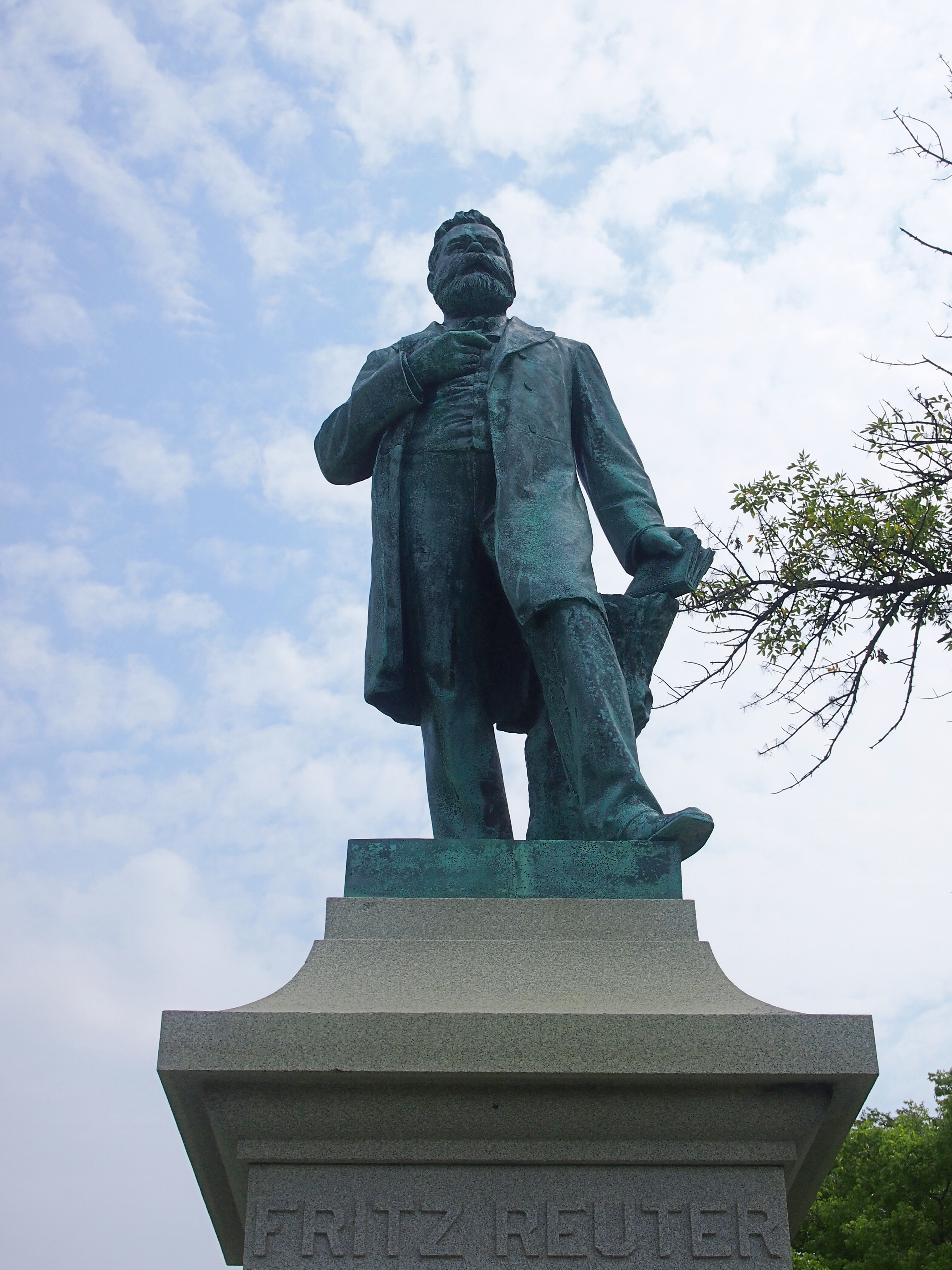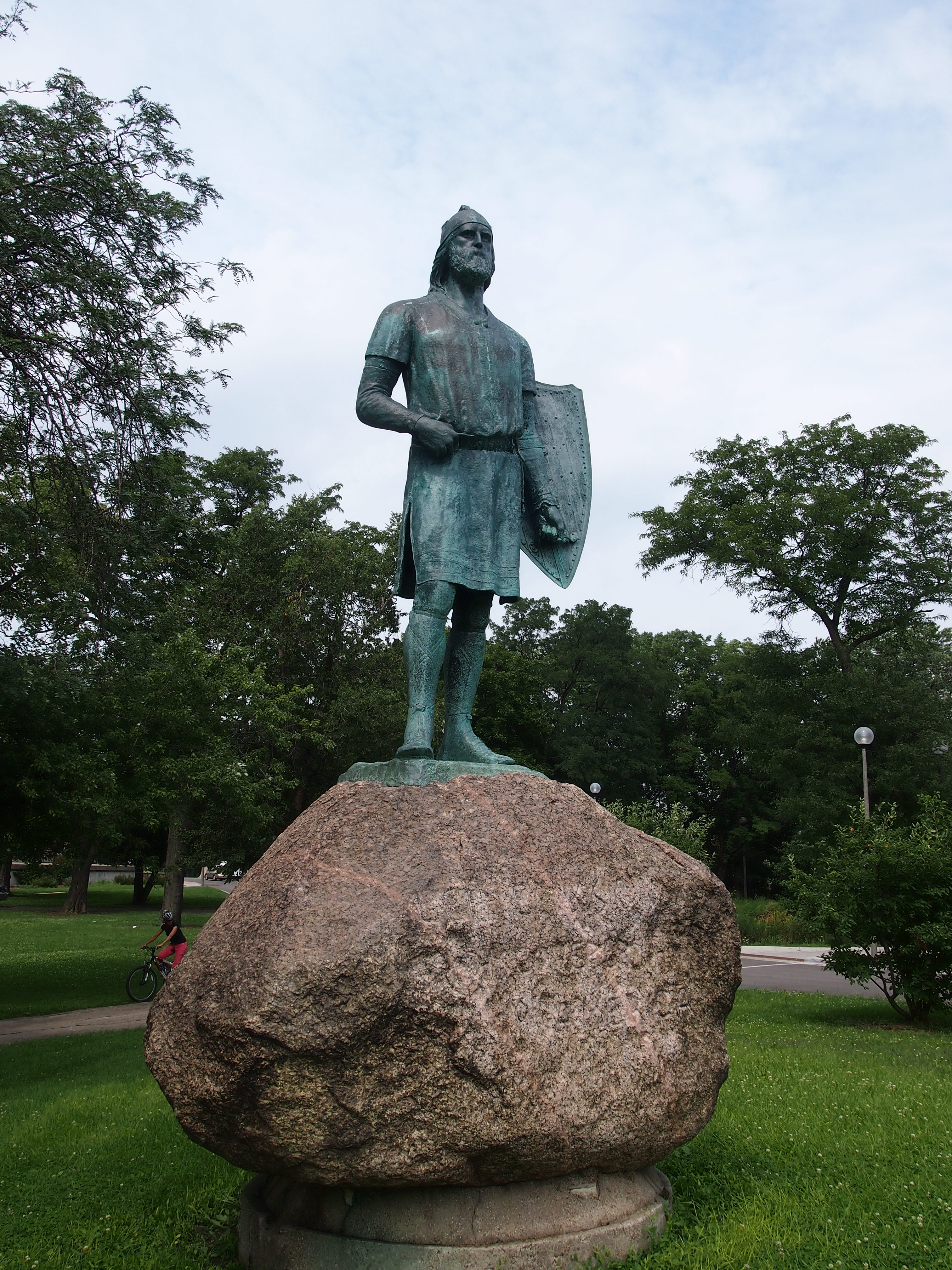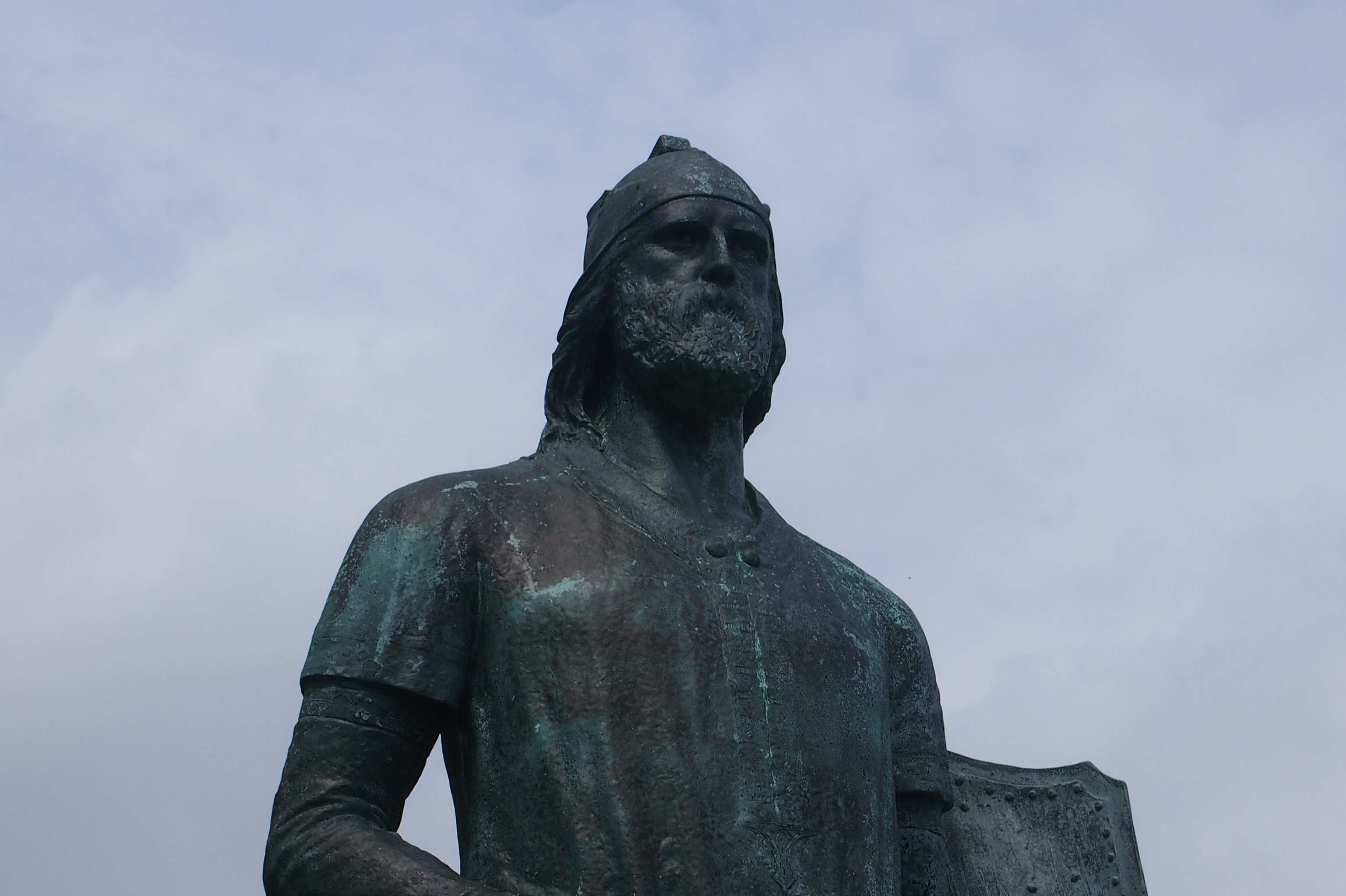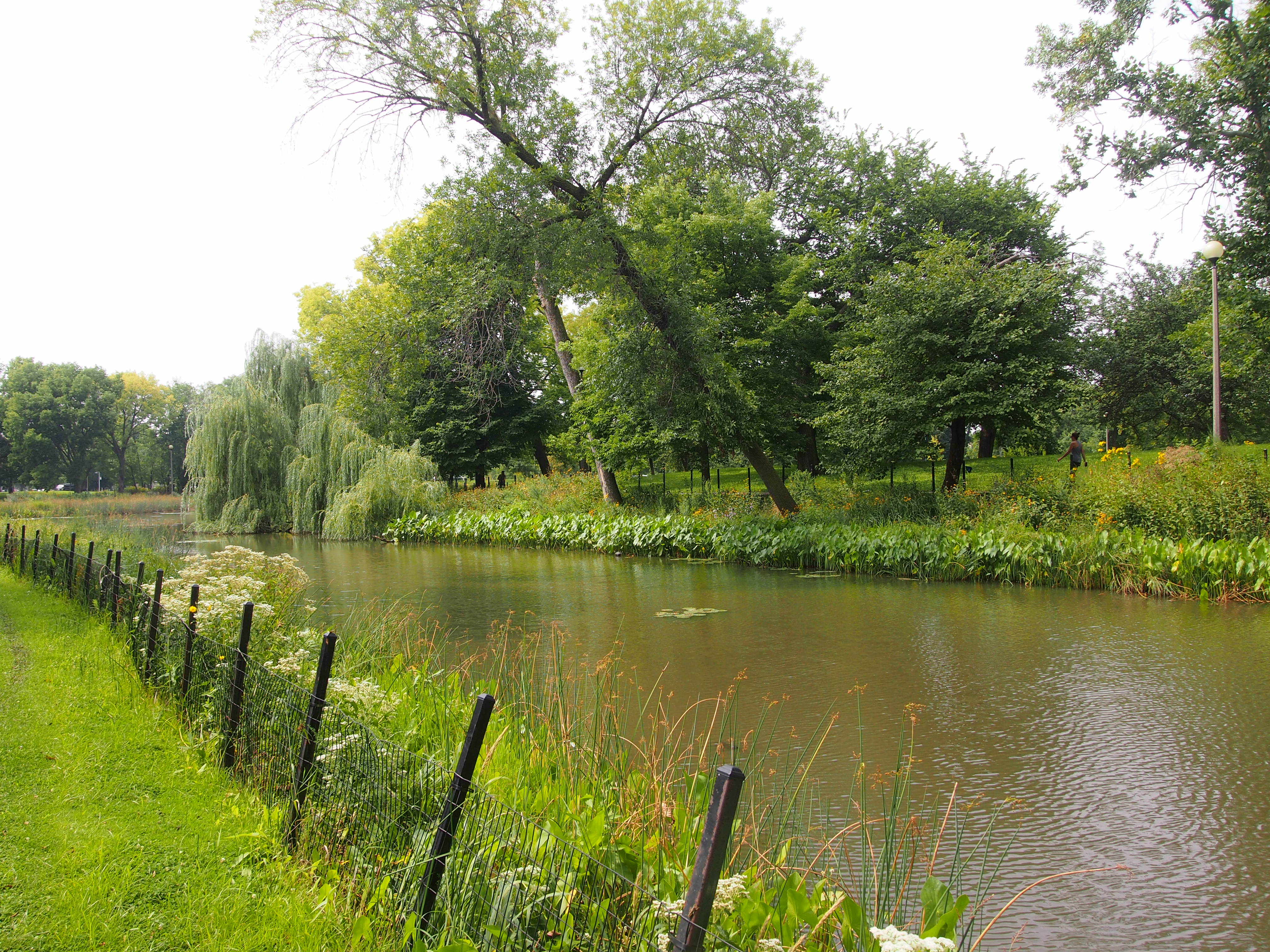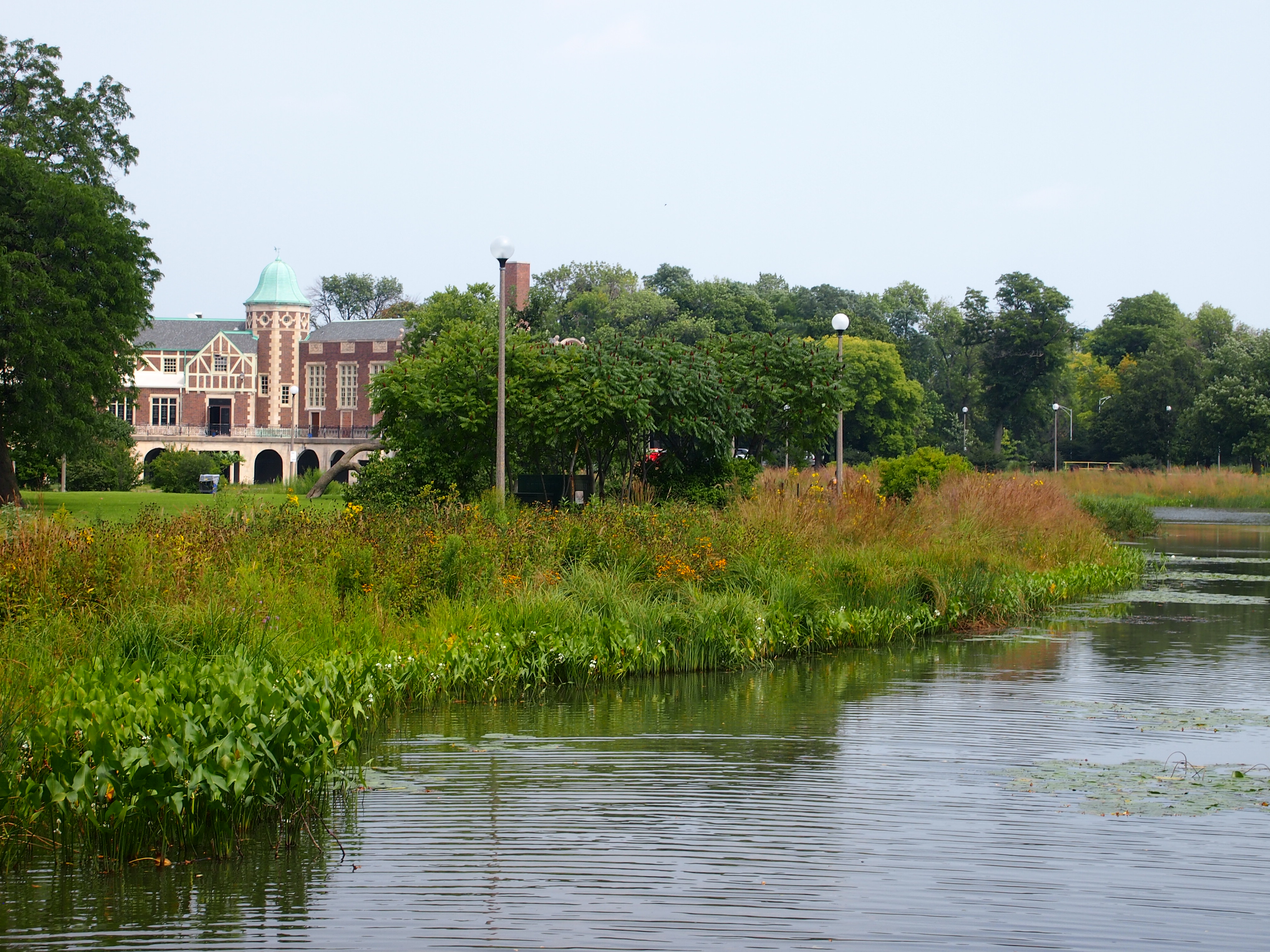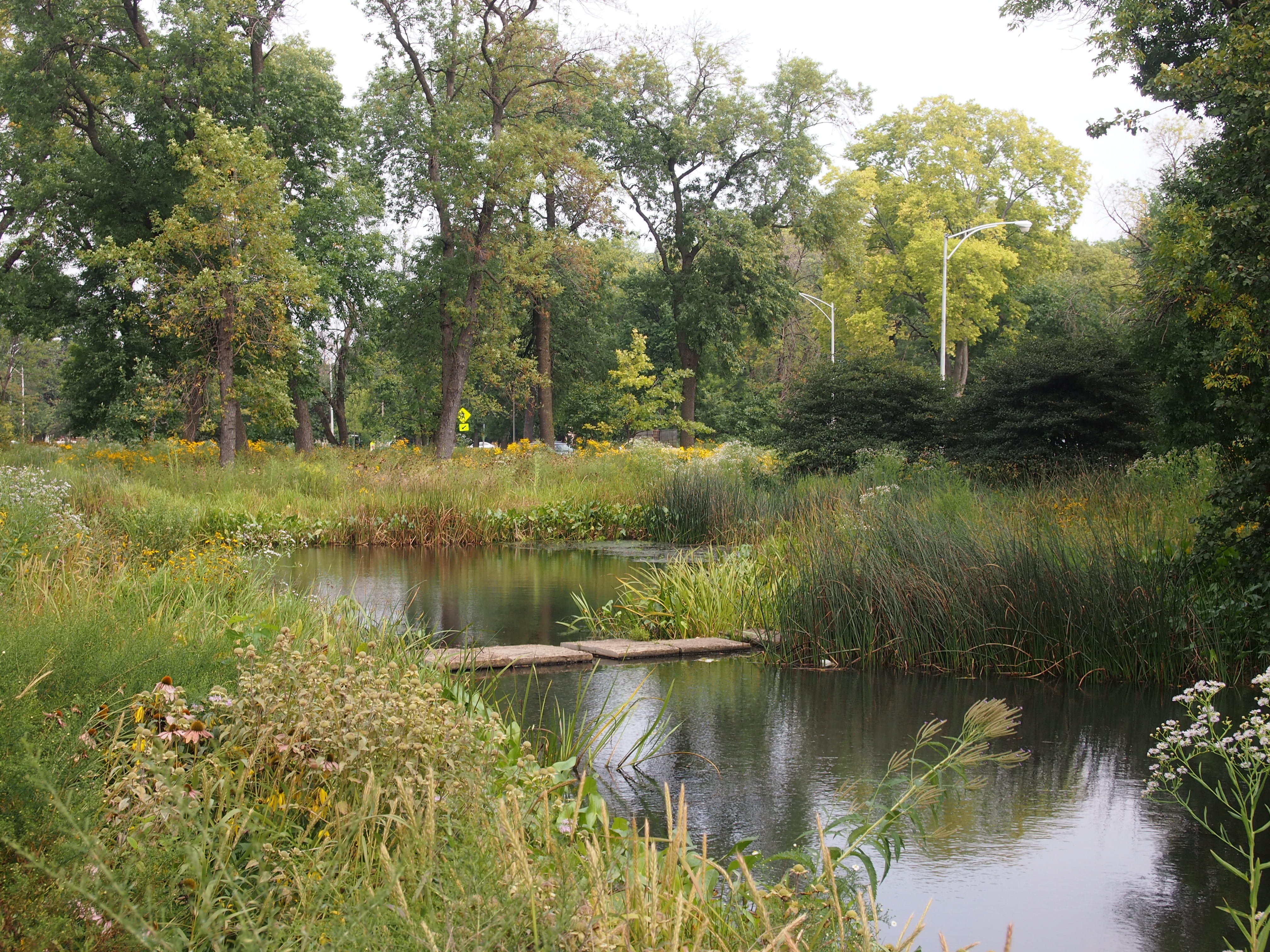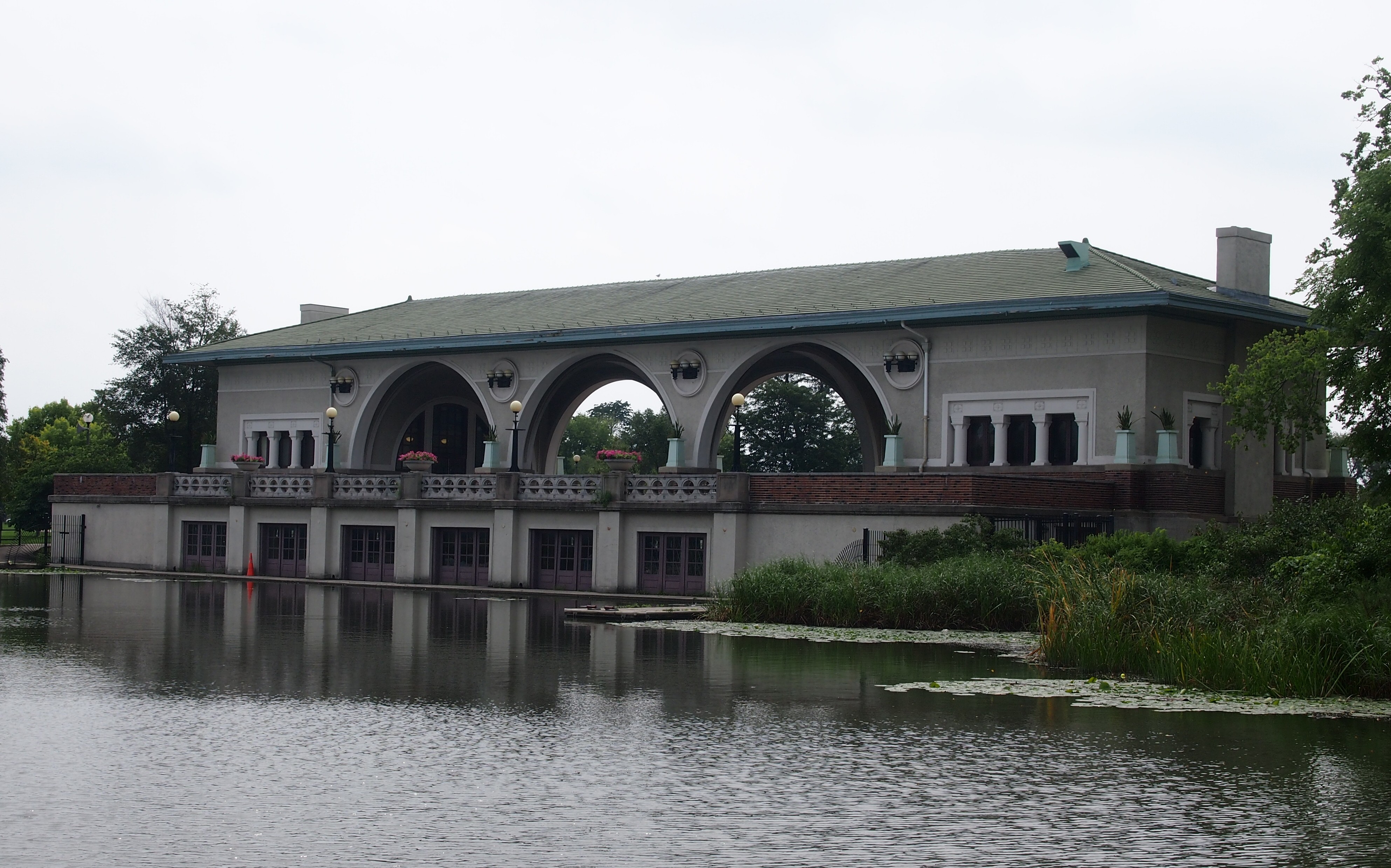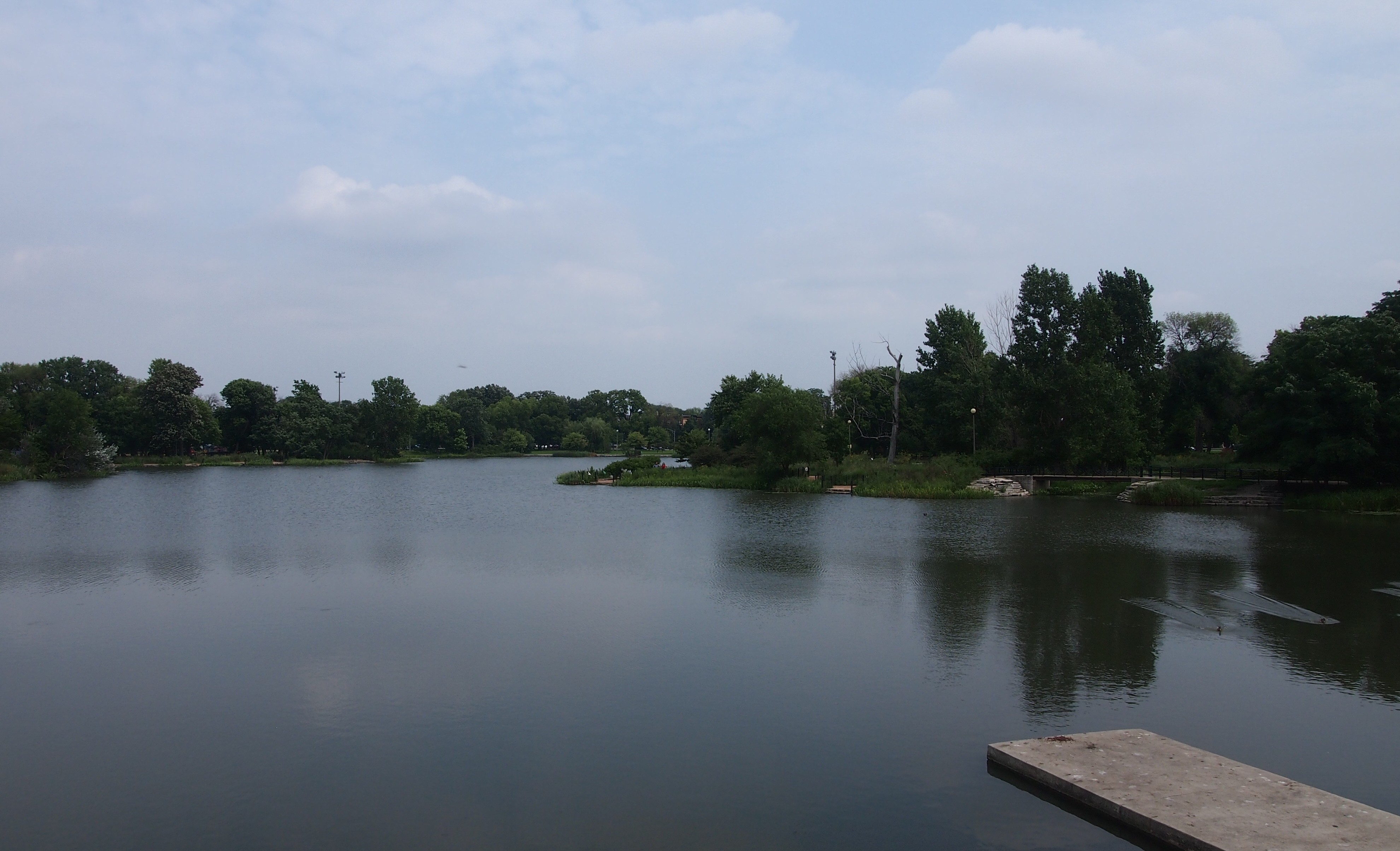On Saturday just after 10 a.m., Yuriko and I found ourselves at First Immanuel Lutheran Church, 1124 S. Ashland Ave. in Chicago. The predicted rain hadn’t happened yet, and the morning was warming up, unlike most of the fall-like days last week.
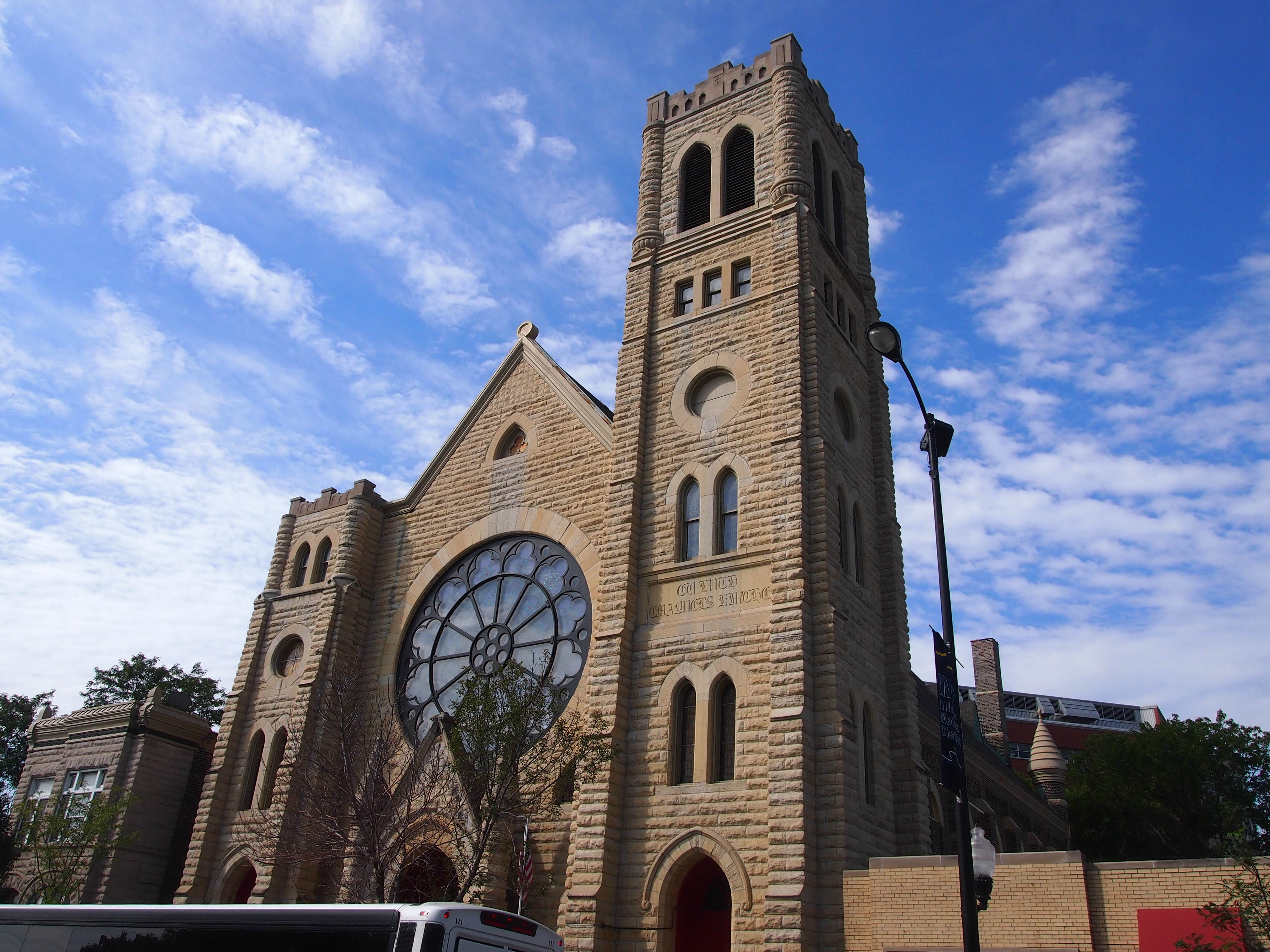 Note the top sliver of bus in front of the church. We’d come by bus, as participants in the Chicago Architecture Foundation Churches by Bus tour. Five busloads of people spent part of Saturday morning and afternoon, in an tour organized by the foundation, at five different churches on the West Side and in the Pilsen neighborhood. Each bus had a different route, so that only one at a time was at any given church. Our bus, #4, went to First Immanuel first. All of the churches were worth a look, and most had some extraordinary features.
Note the top sliver of bus in front of the church. We’d come by bus, as participants in the Chicago Architecture Foundation Churches by Bus tour. Five busloads of people spent part of Saturday morning and afternoon, in an tour organized by the foundation, at five different churches on the West Side and in the Pilsen neighborhood. Each bus had a different route, so that only one at a time was at any given church. Our bus, #4, went to First Immanuel first. All of the churches were worth a look, and most had some extraordinary features.
These days First Immanuel is near the sprawling Illinois Medical District, anchored by enormous hospitals — Rush, UIC, Cook County Stroger, and Jesse Brown VA — and including a lot of other healthcare facilities. All that was in future when construction started on the church in 1888. The congregation dates back to 1854, as a daughter church of a Lutheran church in the city. The area was suburban in the 1850s, and a lot of Germans were settling there. An architect with a suitably German-sounding name of Frederick Ahlschlager did the Gothic Revival design.
In the church’s early days, it wasn’t far from West Side Park, where the pre-Wrigley Cubs played. The church’s web site asserts that parishioners were able to watch the Cubs from the tower on their way to winning the World Series in 1909, but maybe they simply got the date wrong, since the last time the Cubs won the championship was 1908. By the 1930s, the docent pointed out, the church was ahead of its time in making a conscious effort to include all races, and officially integrated in the 1950s. In 1966, Martin Luther King Jr. spoke at the church.
The interior’s not overly ornate, but it’s decidedly churchly.
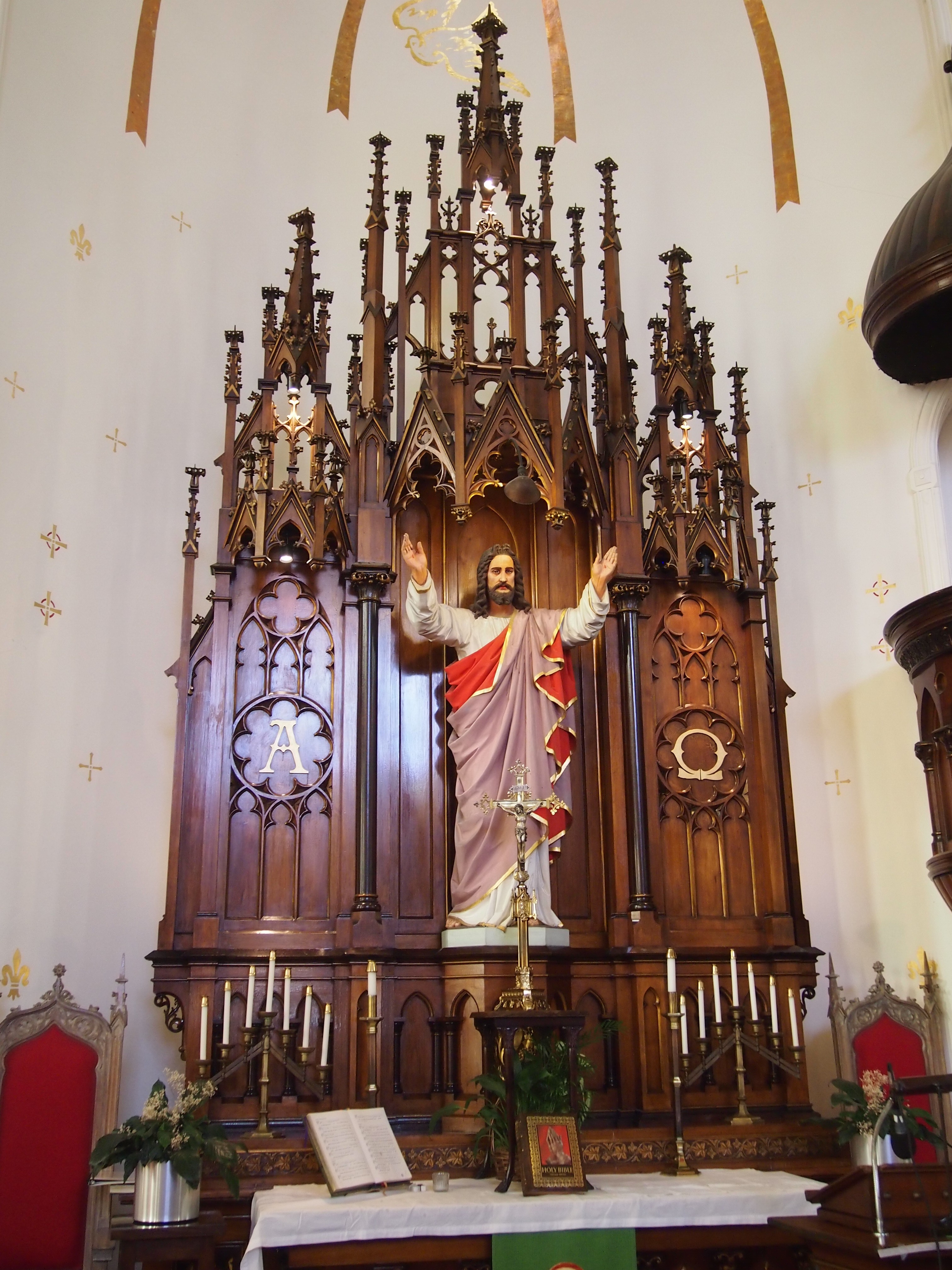 The church’s organist happened to be present, and he treated us with a few minutes’ playing. The organ is new, only installed a few years ago. It’s got 4,000 pipes and a powerful sound. We got a close look at it after the organist finished, which isn’t something you often get to do. Seemed like a forest of pipes in there.
The church’s organist happened to be present, and he treated us with a few minutes’ playing. The organ is new, only installed a few years ago. It’s got 4,000 pipes and a powerful sound. We got a close look at it after the organist finished, which isn’t something you often get to do. Seemed like a forest of pipes in there.
